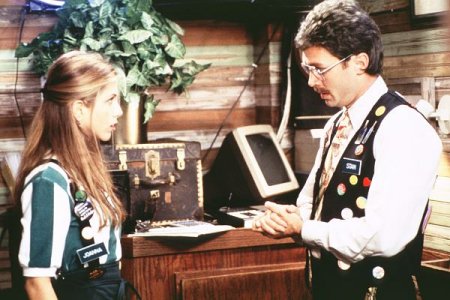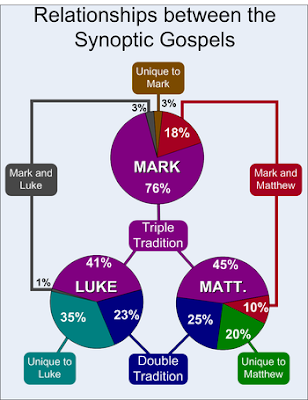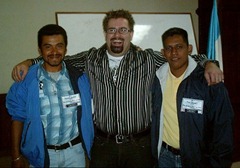If you read my post on CEO Jesus, you know that I have a minor obsession with the strengths-based, leadership culture. And since I’ve recently begun preaching a lot more often, I’ve been reflecting more and more about my own strengths. If you know me, you know that I struggle with pride, which in a lot of ways is a quest for affirmation/approval from other people.
And whether they’re just being nice or not, a lot of people tell me I’m an excellent communicator. And I take pride in that because I work hard on crafting my communication pieces – both in the study and the proclamation.
And there’s my greatest temptation to pride. The gathering I’m leading right now, EPIC, was formed to communicate the truth and power of the Gospel to persons who are (in our vernacular) “dechurched” and “unchurched” – that is, those who have had negative experiences with the Church and those who have never been exposed to Jesus and his Church. When I craft a piece of communication (whether it’s a small group study, a discussion gathering, a prayer, responsive reading or teaching/preaching piece), I keep in mind that I’m speaking to these persons – using language that, while full of meaning to the believers who are gathered to worship, is also understandable and accessible to a person who is unfamiliar with what’s happening.
My problem is that it’s really easy for me to forget that and prepare talks that are meant to impress other Christians.
 We have a lot of visitors to EPIC week in and week out, and a lot of them are ‘church-shopping’ – they’re already believers and are trying to find a church that ‘meets their needs’. These are also the people who are most likely to come talk to me after our gathering, to tell me what they thought of my communication. And, God help me, I get (a sick) pleasure when they tell me that I’m better than another minister.
We have a lot of visitors to EPIC week in and week out, and a lot of them are ‘church-shopping’ – they’re already believers and are trying to find a church that ‘meets their needs’. These are also the people who are most likely to come talk to me after our gathering, to tell me what they thought of my communication. And, God help me, I get (a sick) pleasure when they tell me that I’m better than another minister.
And not only do I feel pressure to entertain, I want to because deep down inside, I want to be the best speaker in town.
Of course that’s fed by the celebrity culture that’s developing in the Evangelical Church at large – we want to find a pastor who’s just like Rob Bell or Erwin McManus or Andy Stanley or Mark Driscoll. But now consider Paul’s words to the Corinthians:
When I came to you, brothers and sisters, I did not come proclaiming the mystery of God to you in lofty words or wisdom. For I decided to know nothing among you except Jesus Christ, and him crucified. And I came to you in weakness and in fear and in much trembling. My speech and my proclamation were not with plausible words of wisdom, but with a demonstration of the Spirit and of power, so that your faith might rest not on human wisdom but on the power of God. – 1 Corinthians 2:1-5*
Paul was (apparently) not a very strong speaker, at least compared to some of the other guys he was up against. And the Corinthians (apparently) were being swayed by other speakers who presented their version of the Gospel more eloquently. But Paul reminds them in this portion of the letter (beginning back in chapter 1) that the Gospel doesn’t rest on human excellence – quite the opposite in fact. The Gospel is for the poor in spirit, the broken, the humble, the least of these. We shouldn’t rely on our skills to proclaim the mystery of Jesus – to do so is to negate the power of the Gospel. Our communication needs to be full of our own journeys towards (and with) Jesus. We need to be communicating from places of weakness, where God is working in us, changing and transforming us. If we’re not, then we’re no better than the so-called super-apostles Paul condemned.
I’m afraid this is a tension I’ll always feel – I desperately want only to do the best job I can, utilize the gifts and talents God has given me to share the power of the Gospel in the clearest and most compelling way possible to those who do not know Jesus. But I’ll always be tempted to start thinking more about becoming a preaching celebrity and putting on a show for the Christians who are evaluating how well I stack up.
At the end of the day, I don’t want to be concerned with what church shoppers think of my talks. I want to spend my energy proclaiming the mystery of Jesus’ death and resurrection to those who have not heard.
Am I alone here? Sometimes I feel like I’m crazy thinking these things.
*For the record, I don’t have room here to discuss how this passage has been abused in recent years by certain super-apostles in the contemporary Church.

 Clichés become cliché for a reason, and “Practice makes Perfect” is no different. I grew up playing baseball, and you could always tell the teams that practiced from those who didn’t. My team usually had brutal (to a 10-year-old) 2 hour practices that included such glamorous activities as running laps, playing catch and fielding ground-balls. Over and over and over. And over. But of course we became a better team for it. Activities that first required concentration and effort became second-nature. We gained more endurance, became a stronger, more focused team for it. This is the beauty of practice for a sports team.
Clichés become cliché for a reason, and “Practice makes Perfect” is no different. I grew up playing baseball, and you could always tell the teams that practiced from those who didn’t. My team usually had brutal (to a 10-year-old) 2 hour practices that included such glamorous activities as running laps, playing catch and fielding ground-balls. Over and over and over. And over. But of course we became a better team for it. Activities that first required concentration and effort became second-nature. We gained more endurance, became a stronger, more focused team for it. This is the beauty of practice for a sports team. awkward space in your message. Running through your material three to four times
awkward space in your message. Running through your material three to four times  Last week, I wrote about using
Last week, I wrote about using 

 Another friend of mine who is especially good at making abstract concepts very understandable is
Another friend of mine who is especially good at making abstract concepts very understandable is  Certainly if you
Certainly if you 
 How often do you speak or teach? Or how often do you communicate ideas to someone else in the hopes that they’ll change their thinking or behavior?
How often do you speak or teach? Or how often do you communicate ideas to someone else in the hopes that they’ll change their thinking or behavior?

